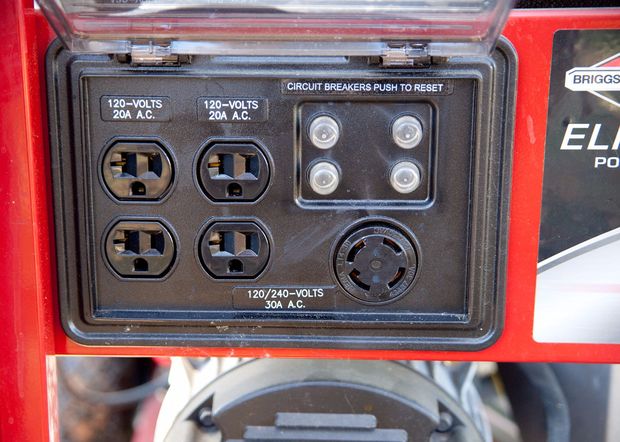Installing a generator safely is not difficult, but many people do it the wrong way and and up creating a hazardous situation for themselves.
By following this step-by-step guide you can do it right. Always, however, have an electrician inspect your final product before you test it out.
A generator transfer switch is the legal and proper way to power your home with an emergency generator. There are three main types: automatic, manual transfer sub panel and a breaker interlock. Each has varying degrees of complexity, benefits and expense.
Automatic transfer switches will sense a power loss, start your standby generator and automatically move your load to the generator. These are awesome – but very expensive and require a full time dedicated standby generator.
Manual transfer sub panel switches are good option. They are less expensive than the automatic transfer switches (Starting around $300) and can be used with a portable generator. They typically only cover a few breakers which was problematic for me.
Breaker Interlock is the option I chose. It is National Electric Code compliant and is in my opinion the least expensive and most flexible option. My setup cost was just under $150. In this setup you use a breaker to energize your existing breaker box. Switching it on is easy and safe. My wife did an unassisted dry run in under 5 min – which included getting the generator out of the building.
The breaker interlock system has come in very handy for us. We can turn on overhead lights, wash clothes and keep our food cold, charge our phones, run the internet and much more….all while keeping our doors and windows closed and no tripping on extension cords!
Disclaimer:
I am not an electrician. After much consulting and over sight from a licensed 25 year Master Electrician I believe these instructions to be correct and accurate for my jurisdiction. Electrical codes vary from place to place. In my place of residence home owners are allowed to do their own electrical work if it is up to code. You are responsible for any code violations, permits or awesome good stuff that comes from doing a project like this.
Step 1: NEVER DO THIS
I've listened to and have even seen people using a double male plug to energize their house during a power outage. This is dangerous.
• It is an electrical code violation.
• It is illegal in most places.
• It is a fire hazard. The power created by your generator is generally greater than the rating for the receptacle, wire and breaker.
• If you don't disconnect your main breaker it can shock the power company linemen – and you will get sued.
• You can easily get shocked because the male plug prongs are exposed.Step 2: Determine your generator plug type and amperage
First you have to figure out what type of amperage and plug type we are working with. You only want to do this on a generator with a big round plug. This will provide 220V (in the US) and power both sides of your breaker box. You will see the amperage written near the plug. Mine is a 30 Amp L-14-30.
For your convenience these are the most common sizes:
Nema L14-20 – 20 amp
Nema L14-30 – 30 amp
Nema CS6365 – 50 ampStep 3: Supplies
Gather your supplies.
For the sake of this build we are going to assume you have a 30 amp plug on your generator – like the one shown. If your have one different please adjust your supplies.
Breaker interlock kit. Buy a UL rated device that fits your specific breaker box. These have been tested and validated to work. Many insurance companies and jurisdictions require the UL rating.– 30 Amp 2 pole (double) breaker. Again you will need to buy one that fits your breaker box. All breakers are not the same.
– Wire. I bought 10 feet of 10 gauge wire in black, red, green and white.
– 30 Amp power Inlet box.
– Schedule 40 electrical conduit and fittings
– Conduit body
– Conduit glue
– Flexible Non-Metallic Conduit and fittings (optional)
In the aftermath of bad weather, generators can be life-savers – literally; they can provide enough power to preserve food and run vital equipment (like heaters and furnaces, water pumps, etc.)
Too often, however, well-meaning DIY'ers instal generators incorrectly and create hazards for themselves an those around them.
This is a partial guide to get you started in safely installing a generator; to learn more visit Instructables.

It takes gas to run it
That’s true home Depot walmart can teach the right thìng